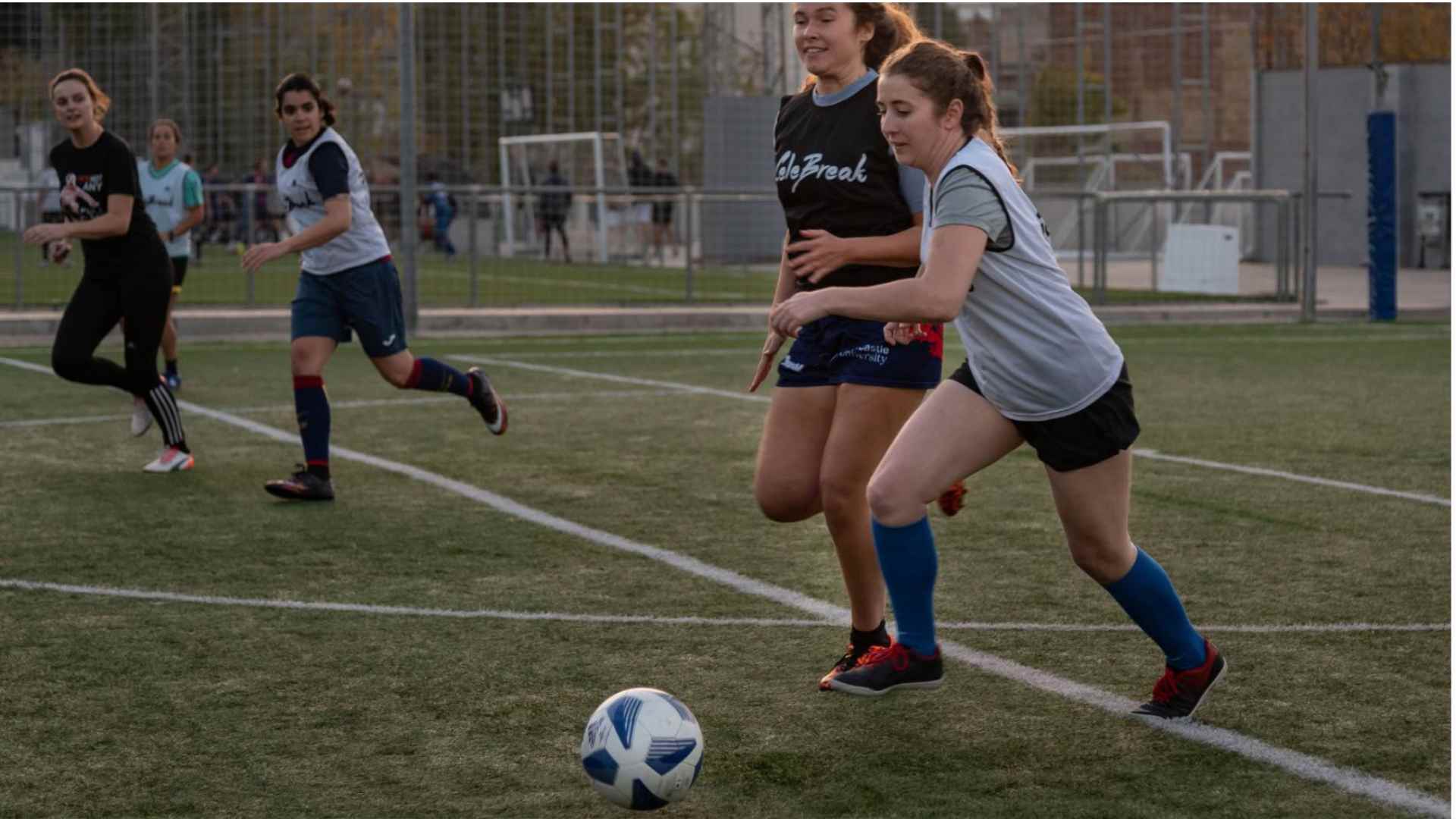In soccer, every movement, every decision, and every play has a purpose and can change the course of a match. Among all these actions, there is one that sometimes goes unnoticed but is of fundamental importance: the goal kick.
This simple but essential maneuver, usually carried out by the goalkeeper from inside his goal area, marks the beginning of a new episode on the field of play.
Although simple, this action contains strategic and tactical nuances that can make the difference between a simple restart and a unique opportunity to create danger or control the pace of the match.
The goal kick rule has been an essential part of soccer since the early days of the game and has evolved to accommodate the changing needs of the sport.
What is the goal kick?
Also called a goal kick, it is a soccer rule used to restart play after the ball has wholly crossed the goal line, either through the air or on the ground, without a goal having been scored and without the ball having been last touched by a player of the defending team.
If the last person to touch the ball is a player from the attacking team, a goal kick will be awarded.
Otherwise, the referee will award a corner kick.
How the goal kick is performed
According to the rules of the International Federation of Association Football (FIFA), the goal kick must be taken as follows:
- The ball is placed at any point within the penalty area (or goal area), which is a rectangle at each end of the pitch that extends from the goal line.
- The goalkeeper or any other player on the defending team can take the kick. It is not exclusive to the goalkeeper.
- The ball is in play as soon as it is hit and moves; it does not necessarily have to leave the penalty area.
- Opponents must remain outside the penalty area until the ball is in play.
- The kick is replayed if the ball does not leave the penalty area or is touched by another player before it is in play.
- A goal can be scored directly from the serve against the opposing team.
Why is the goal kick important?
The goal kick is a fundamental part of the game of soccer for several reasons:
Play Restart: The serve is used to restart play after the ball has left the field across the goal line, last touched by a player from the attacking team, allowing play to continue smoothly.
Ball possession: When taking a goal kick, the defending team regains control of the ball, being a crucial opportunity to change the dynamics of the game, especially if the opposing team has had a period of dominance.
Regrouping Chance: The goal kick allows players on the defending team a moment to regroup and prepare for the next phase of play and can be advantageous after a period of intense pressure.
Strategy and tactics: This free kick can also be a strategic tool. Teams can use this moment to implement specific tactics, such as sending the ball long to find a tall striker or playing short to maintain possession and start a play from behind.
Regulations and Fair Play: Finally, the goal kick is a fundamental rule of football, and its correct implementation is crucial to maintain Fair Play and the integrity of the game. Failure to respect the laws related to the goal kick could result in sanctions for the team or players involved.
In short, the goal kick is more than just putting the ball back into play; it is an essential component of soccer strategy and tactics.
Goal kick and strategies
Beyond simply understanding how this service works, it is helpful to know how this act can be used strategically.
The goal kick is not just an action that allows play to be resumed.
It can also be an essential part of how a team strategizes a match and can be used to control the pace of play.
A goalkeeper can take his time to serve and allow his team to regroup and breathe.
On the other hand, it can also be used to quickly change the attack flank.
This can be especially useful if a team is encountering a lot of resistance on one side of the pitch and wants to try to attack on the other.
short plays
With the FIFA rule change in 2019, players can now receive the ball inside the penalty area during a goal kick.
This has opened up new ways to start the play and maintain possession.
This type of serve can be used to take advantage of an opposing team pressing high down the field.
long plays
Also, a long goal kick can be used to skip midfield, especially if the opposing team is applying heavy pressure.
Although this tactic can result in loss of possession, it can be helpful in relieving pressure or trying to connect with tall, strong forwards.
Frequently asked questions about the goal kick.
Who can take the goal kick?
The goal kick can be carried out by any player of the defending team; it does not necessarily have to be the goalkeeper.
From where is the goal kick taken?
The goal kick is taken from any point within the penalty area or goal area, which is a rectangle at each end of the field that extends from the goal line.
When is the ball considered to be in play for a goal kick?
The ball is considered in play as soon as it is hit and moves; it does not necessarily have to leave the penalty area.
Conclusion
The goal kick can be the start of a well-executed offensive sequence.
This is where individual talent and collective understanding of the game come into play.
From goalkeeper to striker, each player has a role to play in how the ball is handled from this kick.
The player who performs it, usually the goalkeeper, must be able to distribute the ball effectively.
Whether it’s a short pass to a defender or a long clearance to a forward, decision and execution can have a significant impact on the game’s outcome.
The players who receive the ball from the goal kick need to have reasonable control and passing skills, being in charge of advancing the ball safely, and overcoming the pressure of the opposing team.
Why play with CeleBreak?
With a schedule of friendly matches throughout the day, CeleBreak offers a variety of times so you’ll always find a moment to slip on your boots and hit the pitch, no matter how busy your schedule is.
With CeleBreak, you can play soccer at the time that suits you best and without worrying that there are not enough people to play.
Come to the games individually or with your friends and co-workers.
Its match offer includes a series of modalities, women’s, men’s, and mixed football.
Once you download the App, you can register very quickly through your Facebook account.
In the application, you get the dates, times, and locations of the matches as well as a message section.
Join the growing CeleBreak community of passionate soccer fans now!



